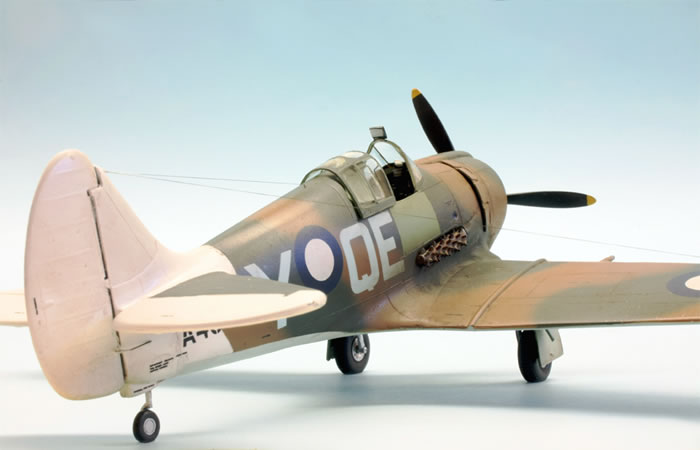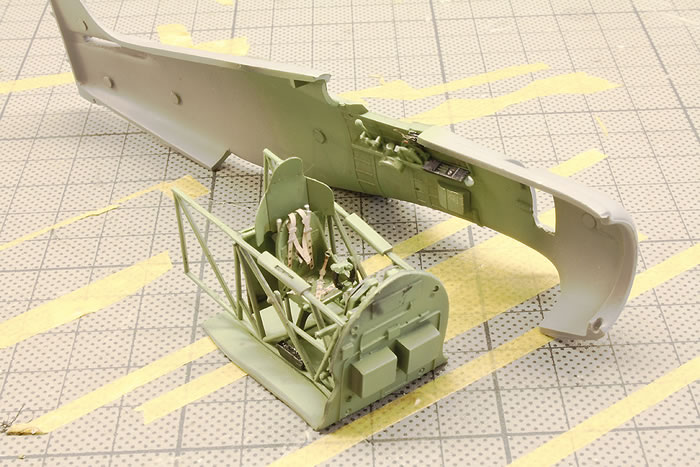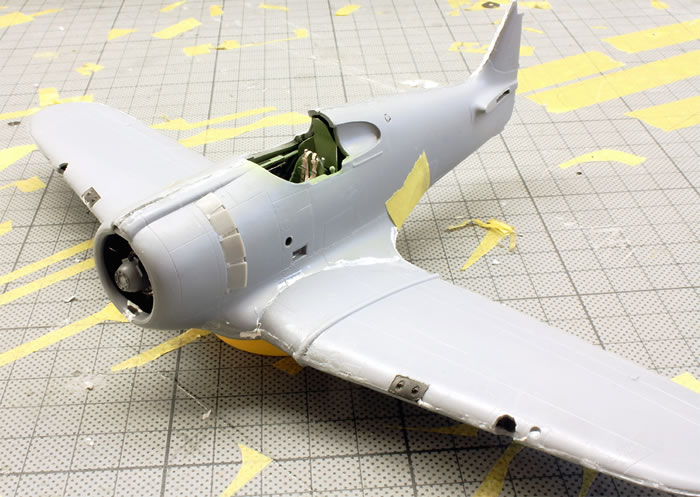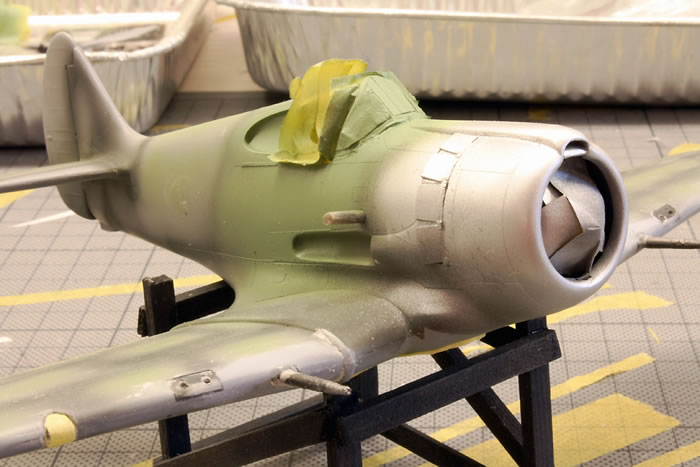Special Hobby's 1/48 scale
CAC CA-13 Boomerang
by Roland Sachsenhofer

Probably many people will recognize themselves when I describe the reasons for my interest in model aircraft construction as follows: the fascination of flying meets (technical) history and stories, combines with historical biographies and fates, and finally ends up in a piece of miniaturized reality, designed with perseverance and craftsmanship; a complex work of plastic, scratched parts and dedication that offers the imagination something concrete to look at and touch.
The CA-13 Boomerang really has a lot to show in these categories: how a new manufacturer without any experience was able to develop a mission-ready and successful fighter plane in the incredibly short development time of three months is still fascinating today!
In addition to Lawrence Wackett, chief designer at the "Commenwealth Aviation Corporation", an engineer who, as a Jew from Austria, had just escaped persecution by the Nazis, was in charge of the project: Fred David, who comes from Vienna and was initially classified as "enemy alien" by the Australian authorities, had been contracted by Wackett right at the beginning of the project.

David's reputation was quite respectable: he had previously worked for Heinkel, and later for the Japanese aircraft manufacturer Aichi, in a leading position in the development of advanced fighters; truly a good recommendation for a job at CAC!
This team achieved the most remarkable thing: since it was foreseeable that the United Kingdom, which was hard pressed in a global war, as well as the USA would not be able to supply Australia with modern fighters, the newly founded consortium CAC was to provide a solution with its own designs. With the CA-9 Wirraway they had just gained first experiences in aircraft construction, now a single-seater fighter was to be derived from this two-seater, by the way a strongly modified licensed construction of the T6 Texan from NAA.
One could orientate oneself by the experiences that North American Aviation had made with own modifications. At the end of the 1930s, the AT-6 had become the basis for a fighter which had been built in very small numbers as the NA-68 or P-64. The seven manufactured machines even saw combat missions after they had been flown on the Peruvian side in the short war against Ecuador.
The CA-13, however, showed only superficial similarities with the P-64, because the basis for the Boomerang was the CA-9 Wirraway, whose wings and landing gear were partly, the tail even completely taken over. For the engine, a licensed version of the 1200 HP Pratt & Whitney R-1830 Twin Wasp, a new fuselage was designed, which also used some parts of the Wirraway.

The CA-13 was well armed: two 20mm cannons and four 7.7mm machine guns in the wings gave it respectable firepower; armour, self-sealing tanks and general flight performance were also state of the art, keeping the Boomerang a frontline tool of the Australian war effort until the end of the war.
However, it soon became clear that the Boomerang was not a superior fighter, but a formidable ground attack aircraft. A total of six squadrons of the RAAF preferred to use the aircraft in this role during the fights in the Southwest Pacific. Its use as a target marker earned the CA-13 the nickname "Smokey Joe"; a designation that suited it better than its former nickname "Panic Fighter"!
In May 1942 the delivery of the CA-13 began, which was manufactured in the CAC factory Fisherman's Bend near Melbourne next to the CA-9. From February 1942 until the end of the war a total of 250 CA-12 Boomerang were manufactured and delivered.
The kit, first released by Special Hobby in 2008, requires a lot of patience and improvisation. Especially the work with the scratched parts is quite a challenge.

Some of the parts are cast on such thick blocks that it is difficult to cut them off without destroying them.

But also the lack of accuracy of fit of the plastic parts calls for constant careful work, constant fitting tests and industrious filling and sanding.
My model shows a Boomerang flown by the No.4 Squadron as it had looked in July 1944. The tail and leading edges of the wing had been painted white to protect them from friendly fire after Boomerangs had been repeatedly fired upon by their own side during their risky ground attack missions.

The aircraft shown here was flown by Jack Archer, the pilot who caused quite a stir by shooting down a Zero with a CA-9 Wirraway.
In any case, the fascination with model making mentioned at the beginning has strengthened this project. Not only the history of the model can arouse interest, but also the required technical and modelling skills will ensure satisfaction - at least after a successful end!
If you are interested in the building process, please have a look here on Scalemates:
https://www.scalemates.com/profiles/mate.php?id=10148&p=albums&album=58790
As ever, remarks will be appreciated: ro.sachsenhofer@gmx.at
Model, Images and Text Copyright ©
2020 by Roland Sachsenhofer
Page Created 12 August, 2020
Last Updated
19 August, 2020
Back to HyperScale Main Page

|
Home
| What's New | Features | Gallery | Reviews | Reference | Resource Guides | Forum |